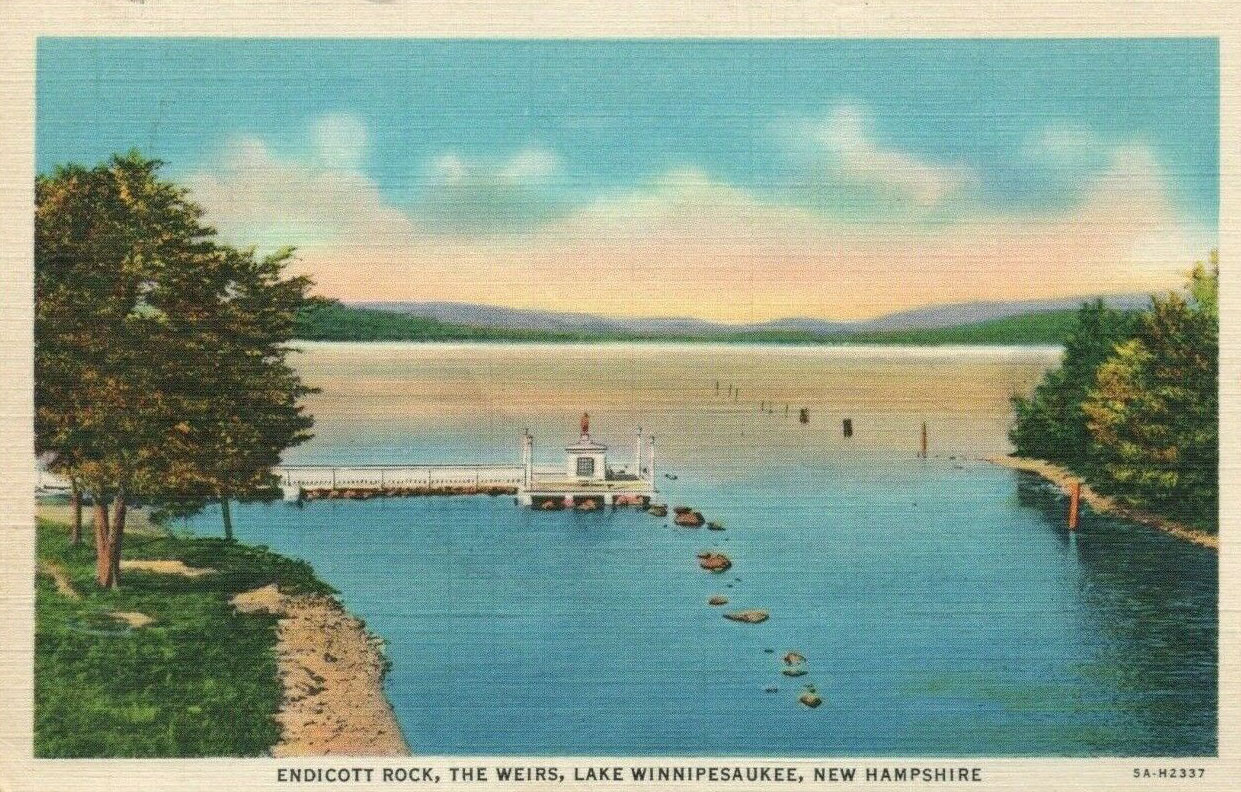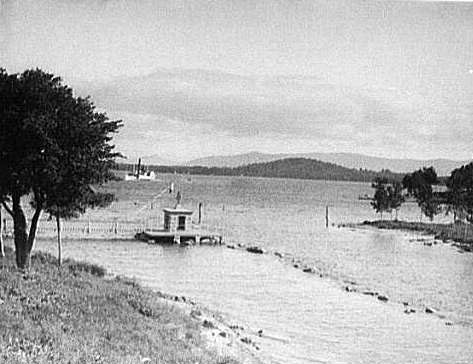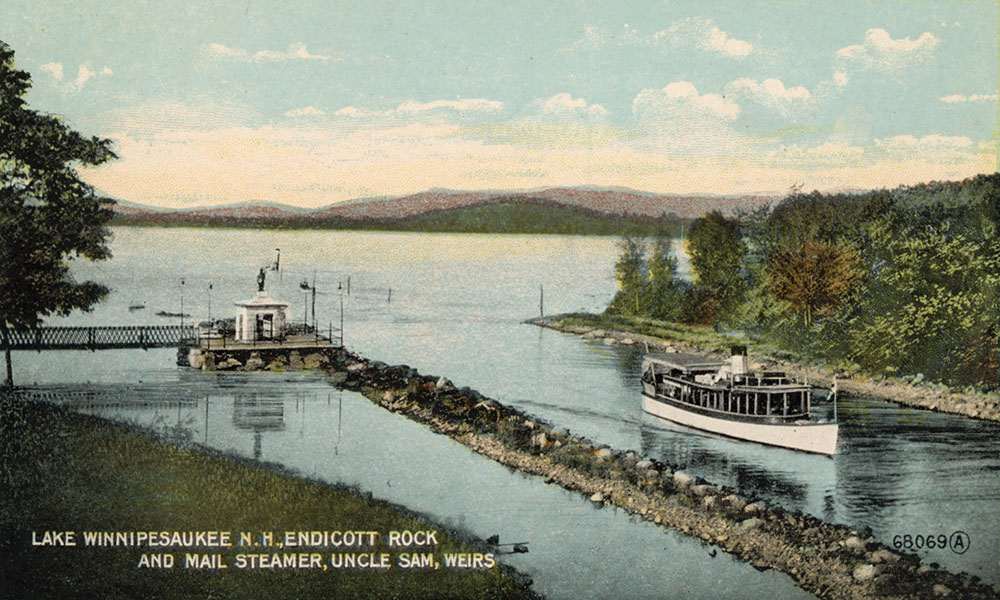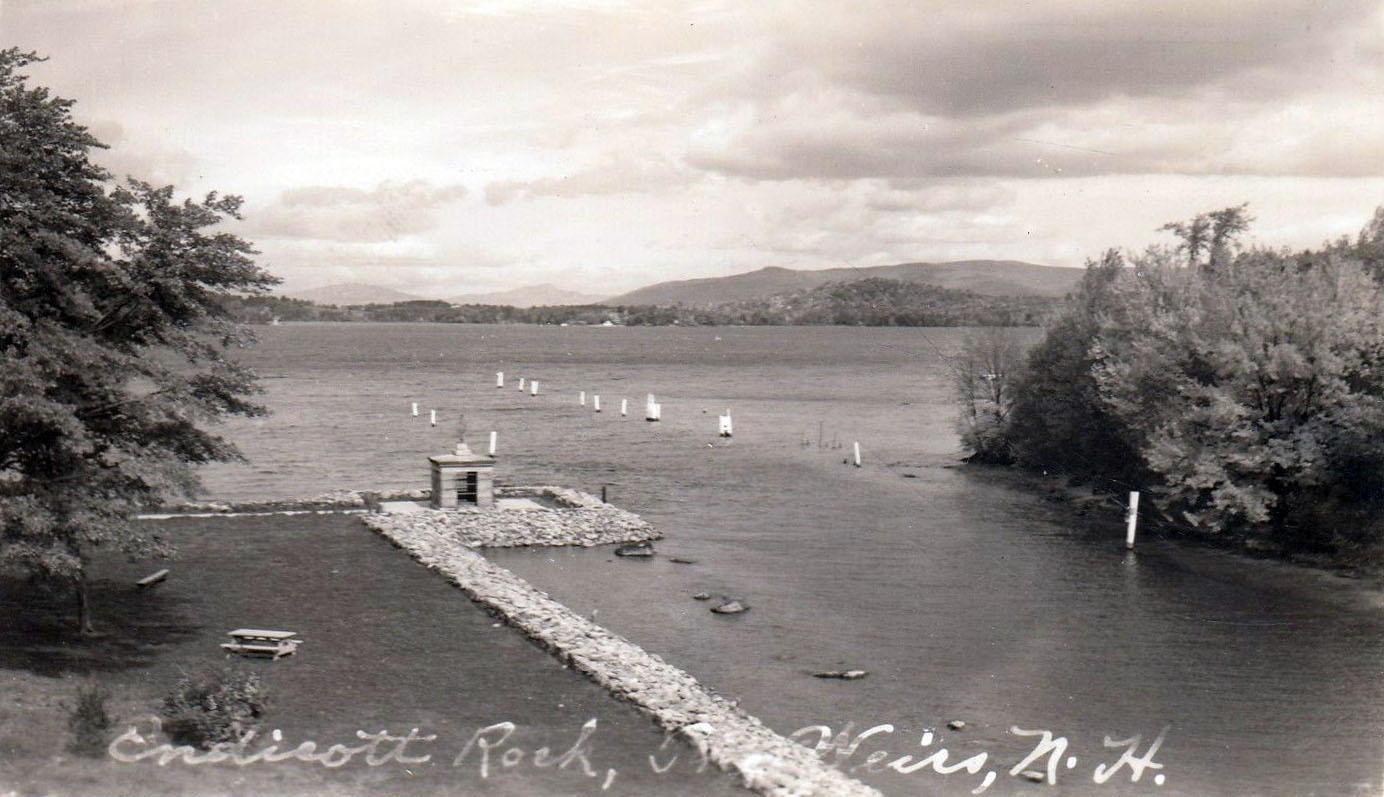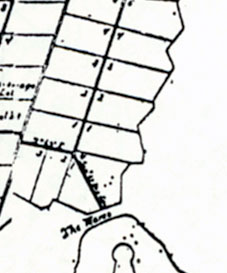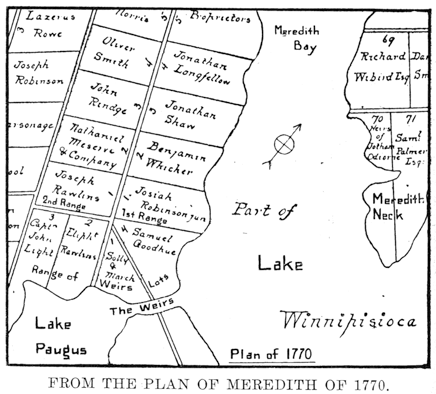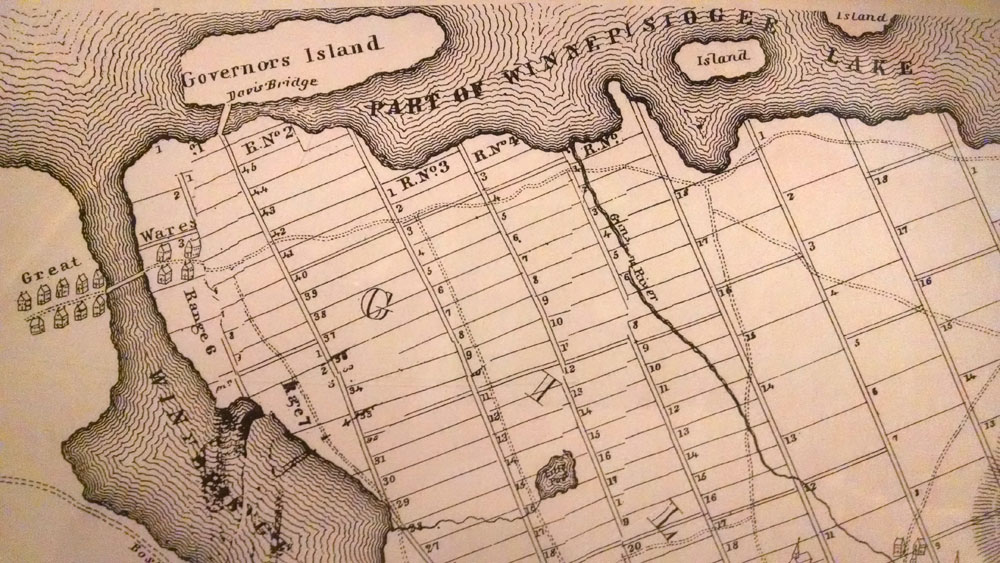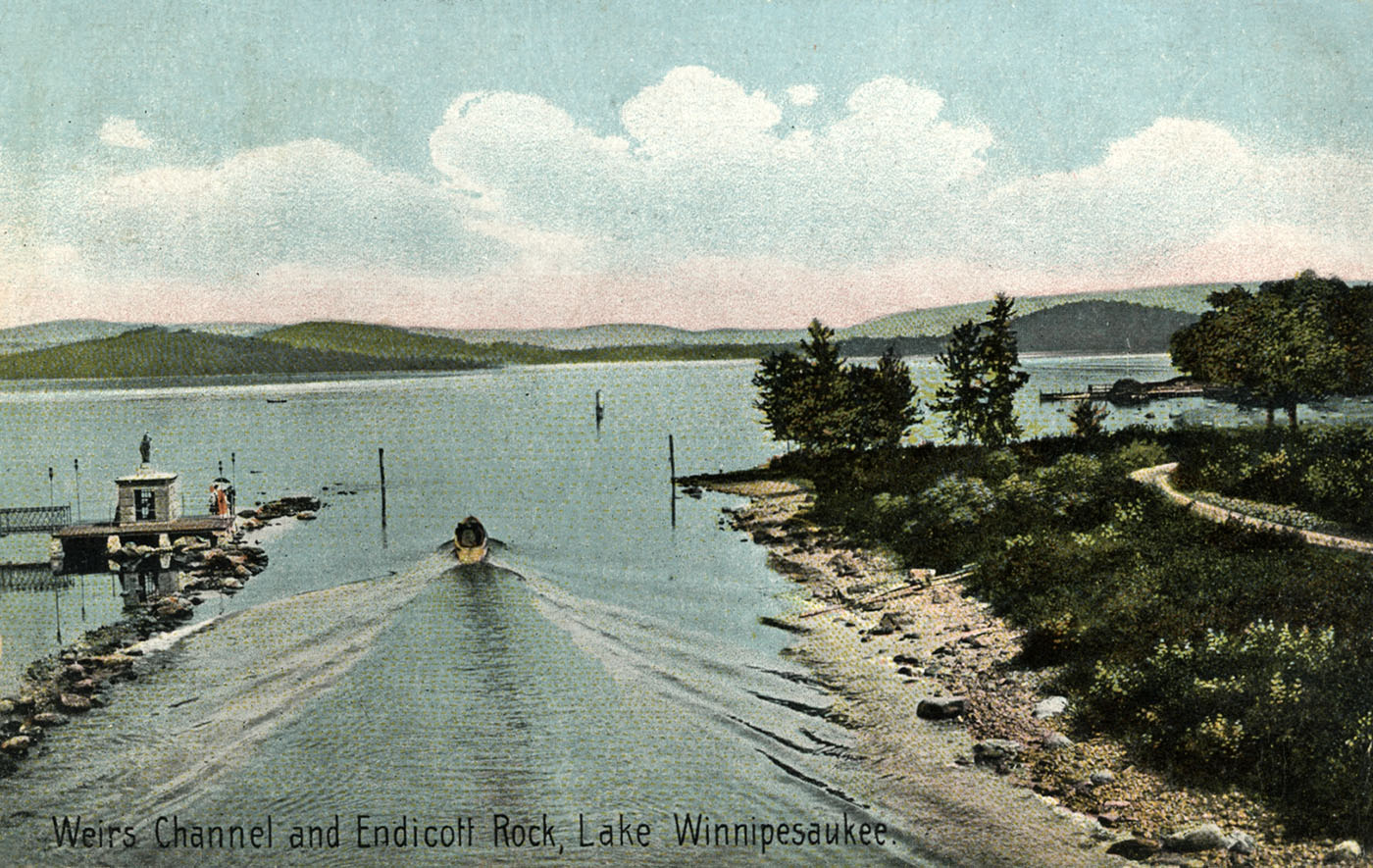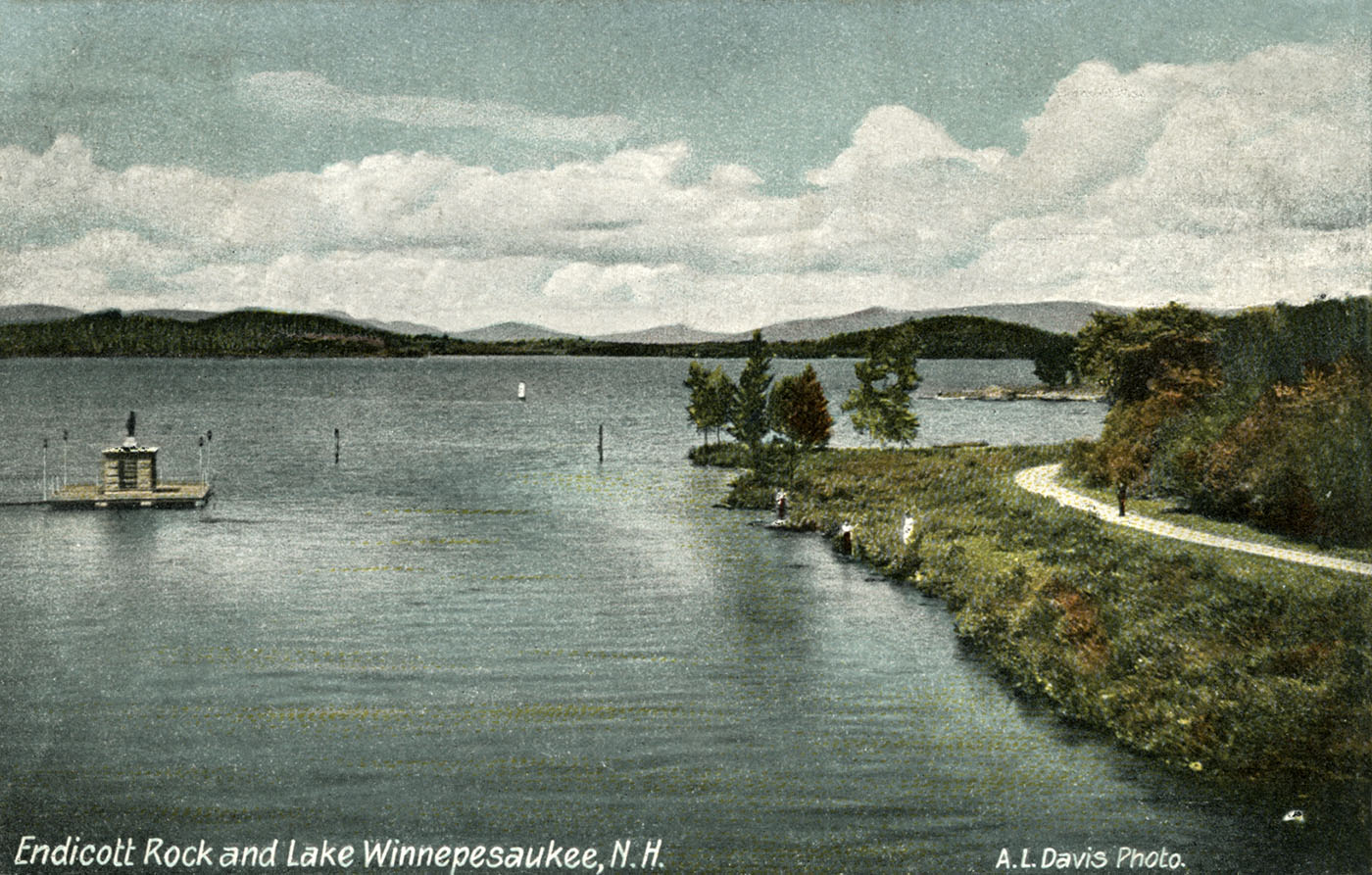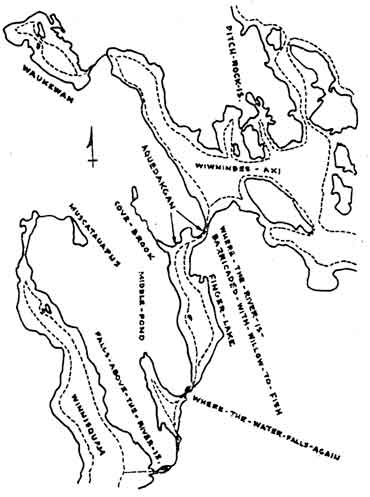Colonials
Why is Weirs Beach where Lake Winnipesaukee begins?
Endicott Rock was added to the National Register of Historic Places in 1980. Click here to see a photo gallery of the Endicott Rock monument.
In the autumn of 1650, the Reverend Gabriel Druillettes, a Jesuit missionary, became the first white man known to have visited Weirs Beach. In 1652 an expedition sent by the colonial Governor Endicott of the Massachusetts Bay Colony, and guided by Native Americans Pontanham (“The Trapper”) and Ponbakin (“The Arrow Maker”), followed the Shad’s migration trail of water in reverse, discovering Lake Winnipesaukee upon arriving at Weirs Beach on August 1. Endicott Rock was then carved with the initials of the explorers to mark the northern boundary of the colony. The rock is still there today, protected by a monument dedicated on August 1, 1892.
Long forgotten, the rock was rediscovered in 1833 when the Weirs Channel was being dredged to allow the Lake’s first steamer, the Belknap, as well as other large craft, to pass between Lake Winnipesaukee and Paugus Bay. (The steamer Belknap was 96′ long, had a beam of 17′, and a top speed of only 6 mph. Belknap County was named in 1842 after the Reverend Jeremy Belknap, of Dover, the “first historian of New Hampshire”.)
In 1833 the channel was perhaps twice as wide as its current width, but relatively shallow. Only the east side of the channel was dredged. Rather than being removed, the dredgings were dumped in the center of the channel, creating a barrier down its middle, with a deep, dredged eastern side, and a shallow, western side. It was not until 1938 that the shallow western side was completely filled in to expand Endicott Rock Park, and the Weirs Channel became the narrow body of water with which we are familiar today.
Initially connected to land by a wooden bridge, a more substantial steel bridge connected the Endicott Rock monument from 1901 until 1938, when the part of the Weirs Channel separating the monument from land was finally filled in.
Circa 1908, the line of dredgings are seen at a very low lake water level. At high water, the dredgings could barely be seen. The Uncle Sam heads towards Paugus Bay.
In 1652, when visited by the Endicott party, the village of Aquedoctan was fully occupied by several hundred villagers. Even after 1696, when the village was finally abandoned, when the small band left relocated to Pequaket (the Conway, NH – Fryeburg, ME area), Native Americans continued to sporadically visit the area to fish and hunt, as the white man had yet to arrive in any numbers.
Visitation was made easy by the several Indian trails that led from every direction to Weirs Beach. From the East, the Coheco-Winninanebiskek trail led from Dover Point to Alton Bay to Weirs Beach; from the South, the Merrimack-Winnipesaukee trail led from Pawtucket Falls in Lowell to Franklin to Weirs Beach; from the West, the Mascoma-Aquadoctan Trail led from the Mascoma River in Lebanon to Bristol to Meredith to Weirs Beach; and from the North, the Ossipee trail led from Ossipee Lake thru Sandwich and Moultonborough to Weirs Beach.
The first white men to regularly visit the area arrived in 1736, with the construction of a fort on the East bank of the Weirs Channel. This marked the definitive end of the era of Native American habitation of Weirs Beach. Eventually, the Natives withdrew, died out or were driven out of New Hampshire entirely. Today, New Hampshire is one of only 10 states nationally, and the only one in New England, with neither federally-recognized nor state-recognized tribal entities.
It was not until the 1760’s that white settlement really began to take hold in Weirs Beach, with the arrival of the first farmers and millers, which only began to take place once clear titles to the land could be acquired.
A detail from the 1753 “Plan of Meredith” map shows the land of Weirs Beach had been subdivided but not sold.
Both of the color postcards below of Endicott Rock and the Weirs Channel were taken in the mid-1900’s. In the picture on the left, the level of the Lake is very low. In the picture on the right, the level of the Lake is very high, covering up the dredgings down the middle of the Weirs Channel, and almost submerging the monument.
Notice the road on the right side of the channel. Today the road has been abandoned and the area is overgrown. The road was called Interlaken Avenue. Click here for extensive information regarding Interlaken Avenue and Park. In 2003, the City of Laconia traded its right-of-way to Interlaken Avenue for an easement to build a footbridge over the Weirs Channel. An 80-room hotel is planned for this location.
Noticing the dramatic difference only a few feet can make in the appearance of the shoreline, one can only wonder what the Lake looked like before the Lakeport dam, when it was 5-12 feet lower! The map below, from the book “Algonquian New Hampshire”, gives an indication. Click here to see the Lake when it was very low in 2001.











